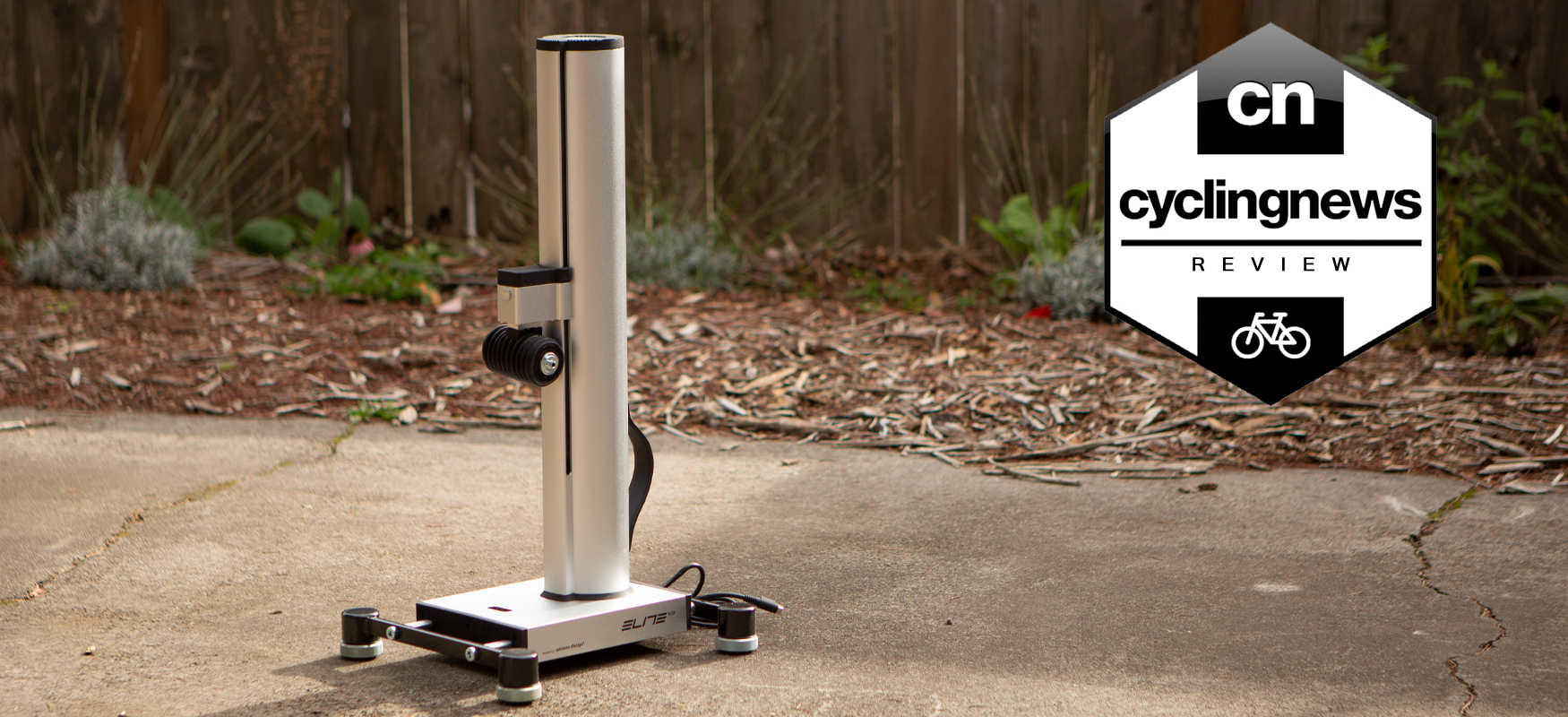Cyclingnews Verdict
If you like the idea of the most realistic indoor riding possible then the Elite Rizer does it better than the competition. It's hard to ignore the price though.
Pros
- +
Not tied to any specific brand
- +
Enables steering
- +
Allows for natural movement of the bike
Cons
- -
Software deficiencies unrelated to Elite
- -
Price
You can trust Cyclingnews
If you want the most realistic indoor riding experience possible there are a few options for getting there. One option is to choose one of the best exercise bikes. Another option is to start with one of the best turbo trainers available and add accessories.
If you go down the path of a turbo trainer and accessories then you've got even more decisions to make. Rocker plates like the Saris MP1 add natural movement or the Elite Sterzo allows you to steer if the software supports it. Alternatively, the Wahoo Kickr Climb works with a Wahoo turbo trainer and raises and lowers the front of your bike as you climb and descend on the screen in front of you.
Elite has a new entry into the category now and it raises and lowers the front of the bike while also allowing steering. We've spent the past few months with it seeing what it's like to use and now we are ready to tell you all the ins and outs of using it. Keep reading if you are considering a serious upgrade to your time riding indoors.
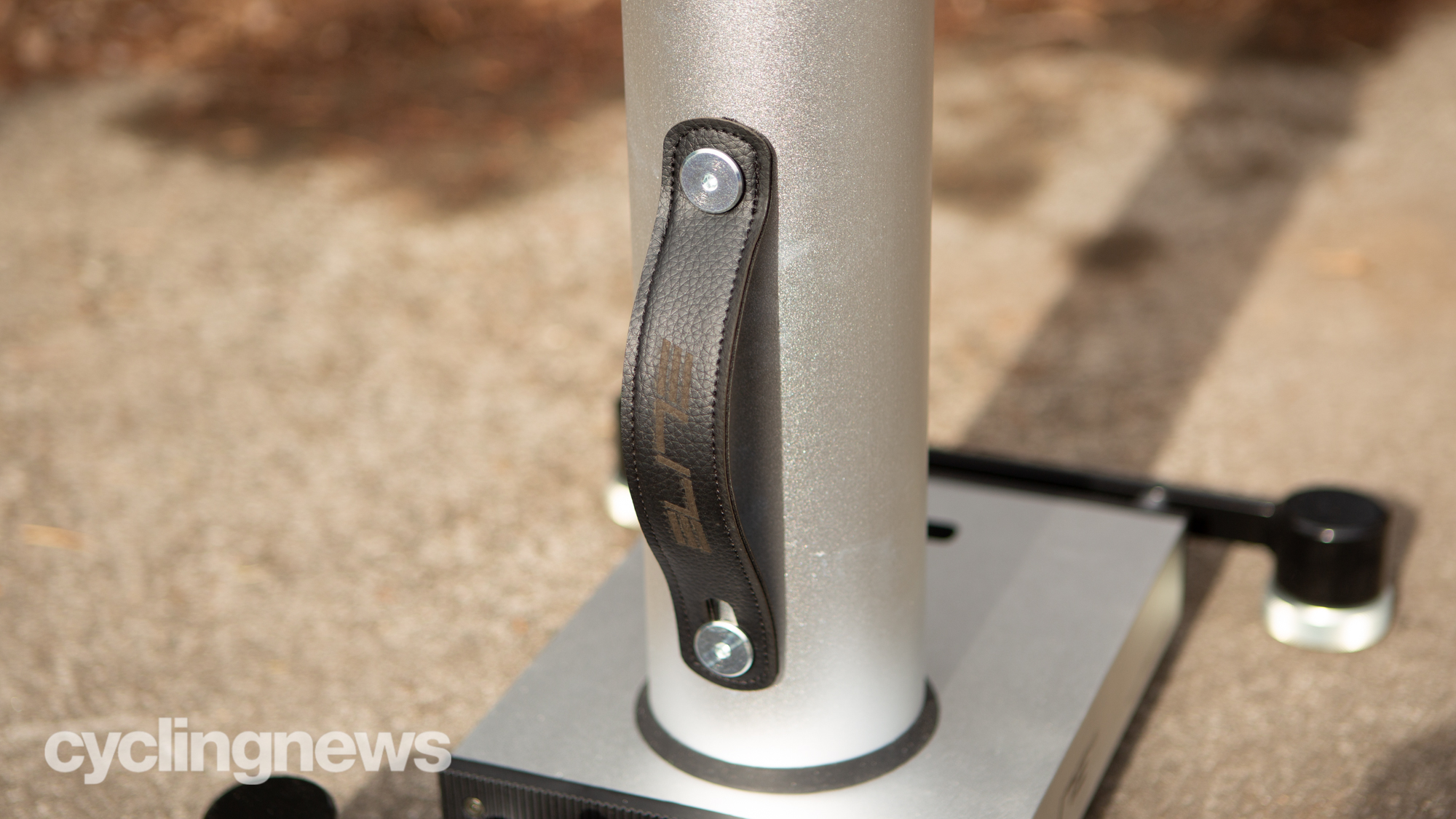
What is the Elite Rizer?
There is only one competitor in the same category and not everyone will even be aware that these options exist. The Elite Rizer is a gradient simulation device that replaces the front wheel of your bike when you ride indoors. It works with whatever software you choose to use and when you ride up a virtual hill, the front of your bike is raised up. When you ride down a hill the front of your bike lowers below the axle height of a standard wheel.
There is only one other product in the same category, the Wahoo Kickr Climb, and Elite's contender boasts some extra features. The most publicised feature is that it's not tied to any specific trainer brand. As long as your trainer supports up and down movement of the rear axle, you can use the Elite Rizer with it.
It is worth noting though that there is some fine print to that. As time passes, and the Rizer spends more time in the market, this may change but right now there's very little that's compatible from a practical standpoint. Elite only lists the compatibility of their own Direto XR, Suito, and Tuo trainers and no one else is saying they are compatible. Since Wahoo has the only competitor, you can assume that anything usable with the Wahoo Kickr Climb will work since those trainers allow the necessary movement. If you've got another brand, it's up to you to figure out if it's compatible.
Aside from compatibility, the other big added feature is steering. Like the Elite Sterzo, it's possible to steer in Zwift. Turn your handlebars to the left or right and your on-screen avatar follows your directions. If you want to follow someone while free-riding in Zwift you now have greater control than you otherwise would.
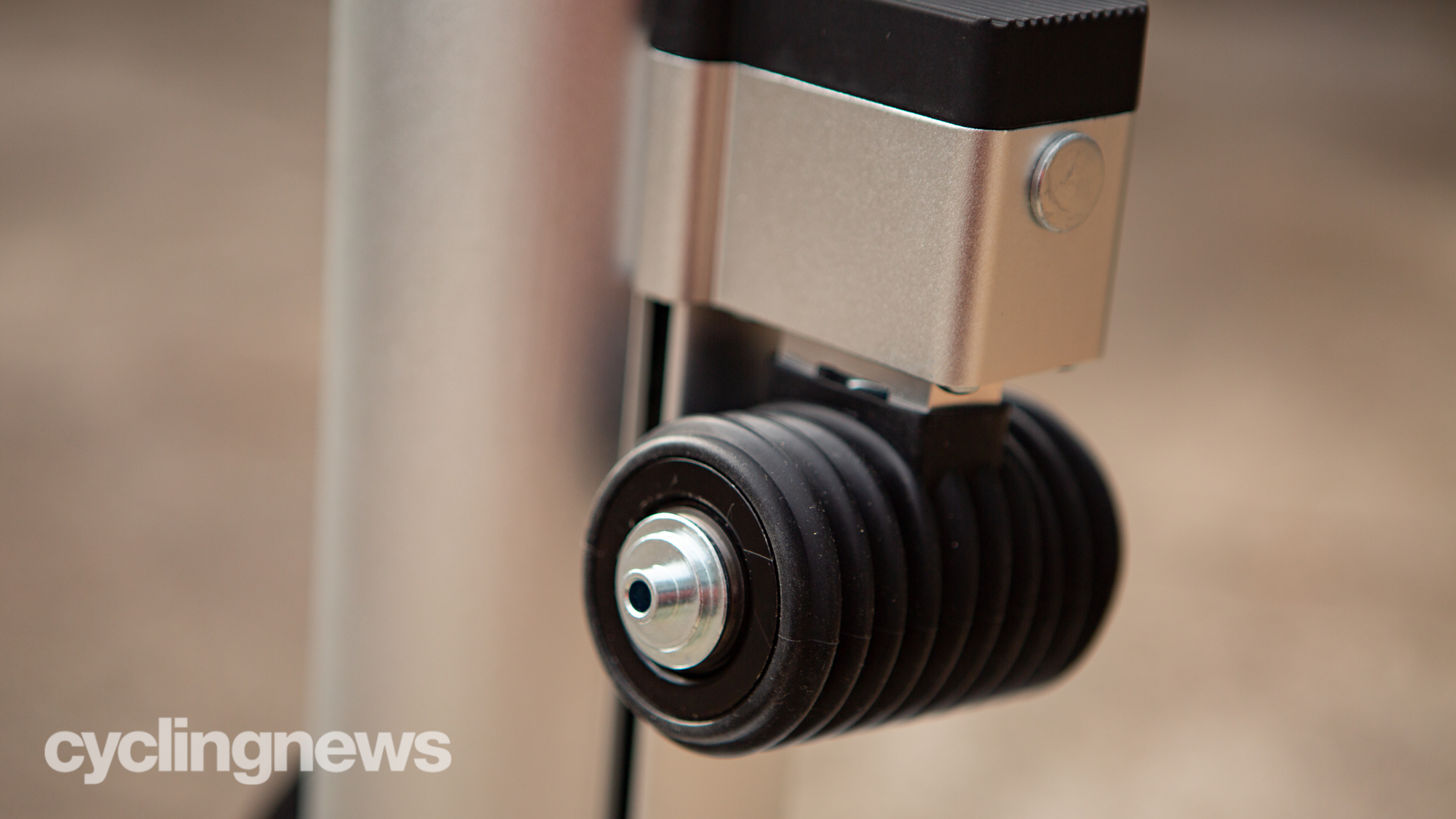
Design and aesthetics
One feature with no fine print to accompany it is the design. There's simply no way to give anything but praise when it comes to the silver and black metal tower. The base is a rectangle with four adjustable feet. The main structure sits on a smaller rectangle carried on a pair of sliders inboard of the outer feet. It all comes fully assembled and built from steel and aluminium.
Keep moving up the central tower and you eventually get to the attachment point for the front fork. Elite claims compatibility with "all commercially available bicycles'' and includes adapters for QR, 12x100, 15x100, 15x110. The "axle" on the Elite Rizer sits within rubberised bellows providing protection from sweat and allowing movement for steering.
Keep moving up to the top of the tower and you'll find the onboard controls. Automatic movement will happen depending on the virtual gradient you are experiencing but you can also use manual control. There's a companion phone app for manual control or you can reach over your bars and press up or down. If you were wanting to angle the bike up while doing interval training, it's an easy option and there are different ways to make adjustments.
Inside the tower is where the movement happens. The design lacks any belts or rubberized pieces and instead relies on a motor in the base and a threaded metal rod. The piece that holds the axle externally rides on a threaded nylon tube that rests on the threads of the rod. Rotate the rod and the bike moves up and down the threads. It's a well-engineered system that moves quickly and does so with minimal noise. The max weight limit is just under 120 kg or 264.5lbs.
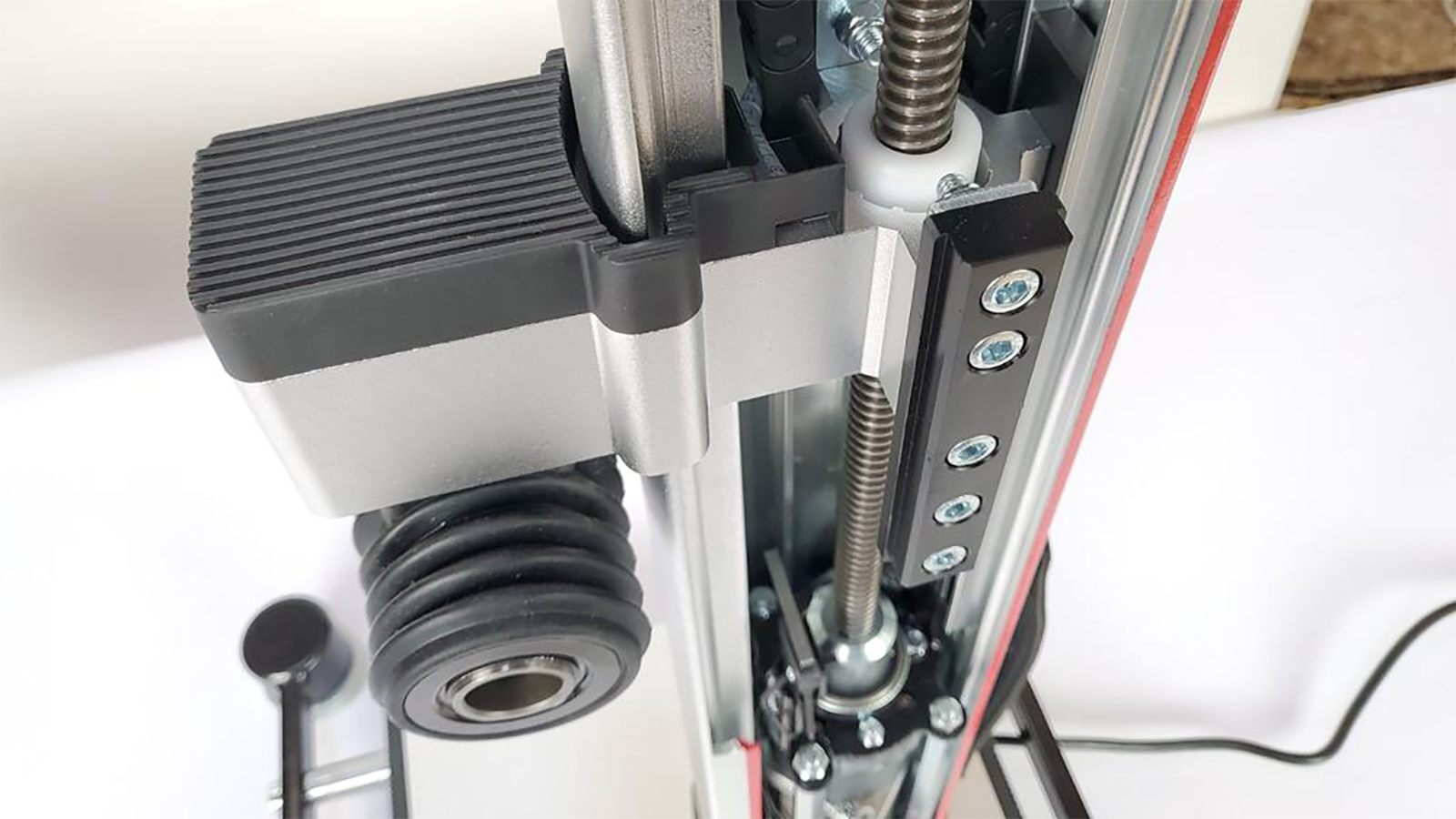
Ride experience
My virtual riding happens mostly in Zwift but not exclusively. When in Zwift the first thing you have to do is change a couple of settings. The default setting for gradients in Zwift is 50 per cent. If you want to feel realistic gradients you've got to change that setting. There are reasons you might have that set to less than 100 per cent though. If you want to use a narrow range rear cassette for racing but still get up steep hills you can reduce the gradient setting and virtually change your gearing.
Whatever your reasons, the Elite Rizer has a solution. Open up the companion app and change the difficulty setting. You can set things up so that your trainer takes advantage of the lower setting but you still get the full range of +20% to -10% that the Elite Rizer is capable of. Even if you ride with your trainer settings turned to 100% you will want to make an adjustment here. Zwift automatically halves your descent value and it's a significant change when you toggle this.
Now that you've got everything set up you are ready to start riding. The experience is brilliant on the hardware side. Over and over, it brought a smile to my face to go through a roller and have the bike move up and down to match. It's also a great reminder in a tough race that things are about to get hard. It's easy to get locked into just pedaling and forget race dynamics as they relate to climbs but when your bike moves it wakes you up.
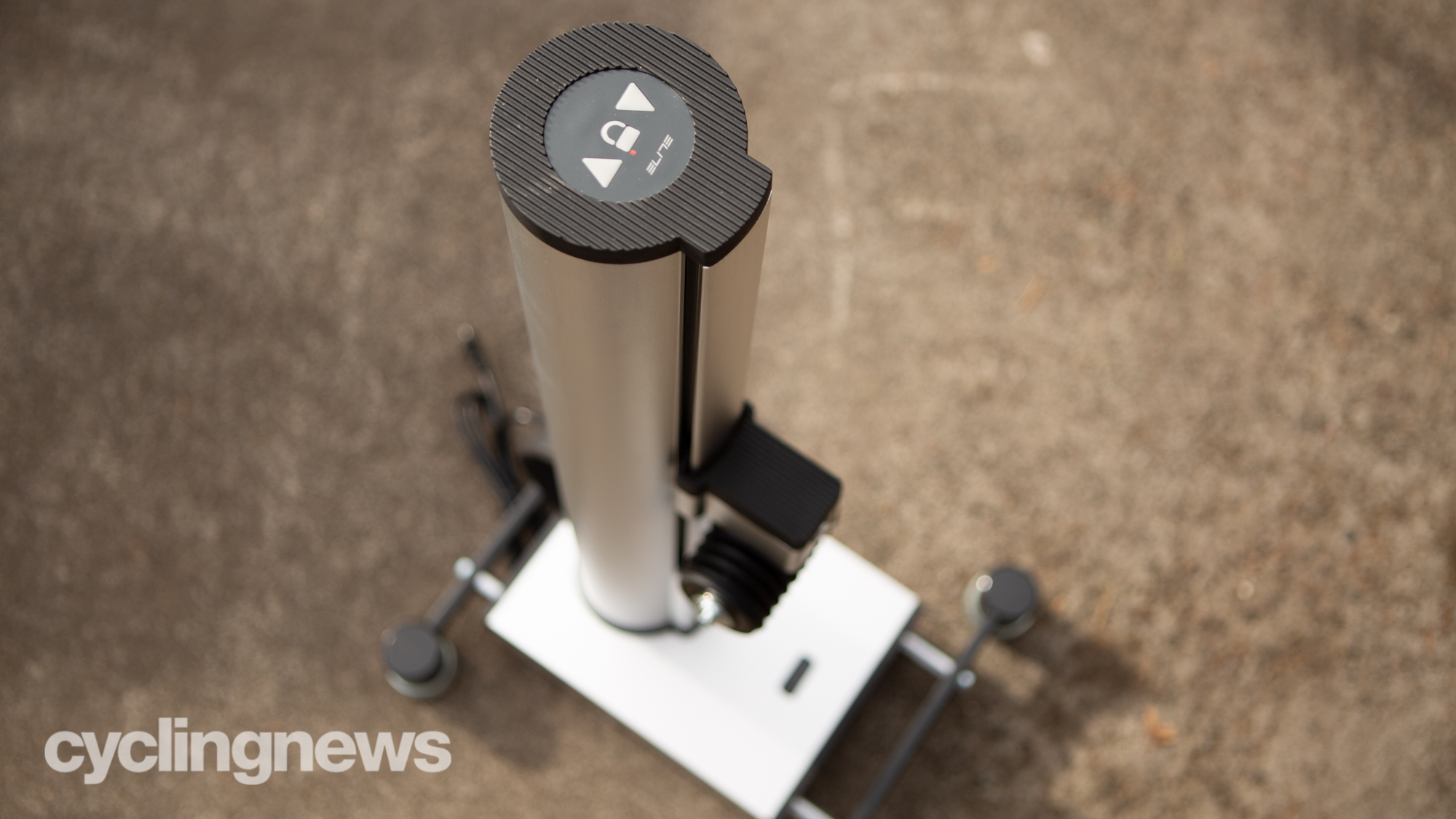
One thing it really highlights though is the software deficiencies. Gradients in Zwift are not as good as you might think. Some of them, like the rolling section on the Watopia flat route just before you head back to the start, don't match the visual to the gradient. As you start to climb each roller your bike is still descending. In other places, there are jumps in gradients. Switch to Rouvy, which uses real-life courses, and you can see how much better the software feeding the gradients is and how that allows the Elite Rizer to respond more naturally.
Switching back to Zwift allows you to try out steering, but this whole feature is almost completely useless. This isn't an Elite issue but Zwift makes very little use of it and in most cases where you'd want to use it, the feature isn't available. If you are following a pace partner and feel like you are having trouble staying in the draft you might want to use it to steer back behind the rider, except it's turned off. The same thing goes with almost all races. The only place you can use it is during free riding where it doesn't really matter. If you do use it in these situations, it doesn't feel all that natural since the bike doesn't lean. There is one huge benefit to the steering feature on the hardware side though.
What might be the greatest feature of the Elite Rizer is that it allows the front of the bike to move naturally. You might not need to steer virtually but because that feature exists you can move your bars back and forth as you ride. There's also a bit of back and forth because of the sliders that make the up and down motion possible. Suddenly the whole bike feels more natural and alive and it's brilliant.
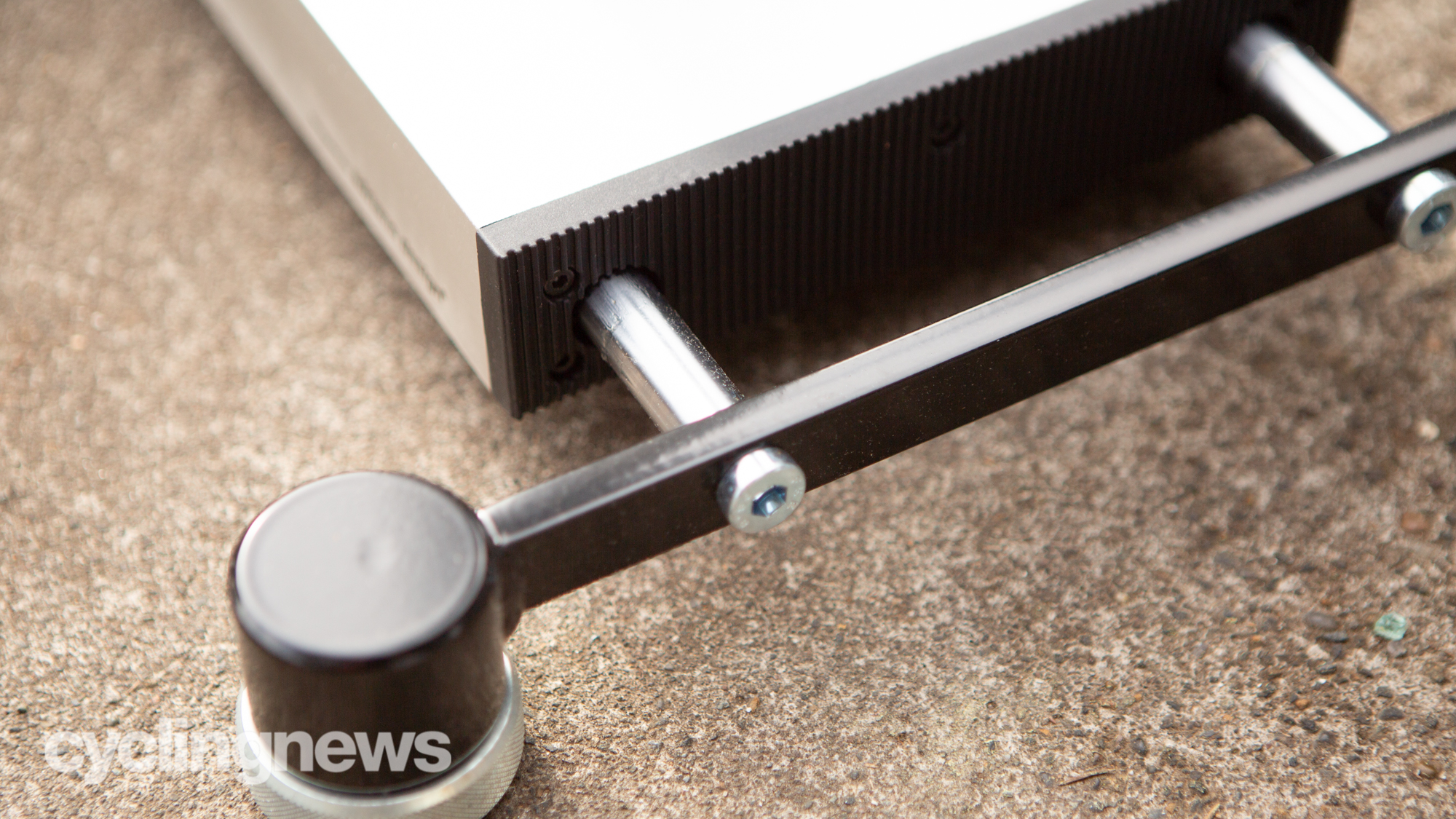
Verdict
On the hardware side, the Elite Rizer is fantastic. It allows your bike natural movement in a way that feels great and the up and down will truly bring a smile to your face. At the same, the software to fully support the hardware features is lacking a bit. That's not something Elite is responsible for but it is an issue that will affect your experience when using it.
The biggest challenge with the Elite Rizer though is price. It is more immersive to have gradient simulation than to not have it. If you want to upgrade indoor riding it makes sense to add the feature. Elite is also offering better hardware than the only competition in Wahoo's Kickr. However, it's just not £375 / $500 worth of better hardware when the end result is almost the same experience.
If you want the best, you won't go wrong with the Elite Rizer but it's an expensive option in an already expensive category that feels a few years away from actually being useful, courtesy of the slow uptake from the software providers.
Tech Specs: Elite Rizer
- Price: £824.99 / $1,099
- Maximum grade simulation: 20% Ascent, 10% Descent
- Official compatibility: Direto XR, Direto XR-T, Suito, Suito-T, Tuo
- Size: 728x345x387 mm (H x W x L)28.6’x13.5”x15.2”
- Included adapters: QR, 12x100, 15x100, 15x110
- Firmware updates: Yes
- Max load: 120 kg (264.5 pounds)
Josh hails from the Pacific Northwest of the United States but would prefer riding through the desert than the rain. He will happily talk for hours about the minutiae of cycling tech but also has an understanding that most people just want things to work. He is a road cyclist at heart and doesn't care much if those roads are paved, dirt, or digital. Although he rarely races, if you ask him to ride from sunrise to sunset the answer will be yes. Height: 5'9" Weight: 140 lb. Rides: Salsa Warbird, Cannondale CAAD9, Enve Melee, Look 795 Blade RS, Priority Continuum Onyx
